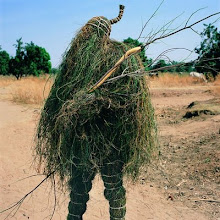A long standing assumption, is that honeybees "preceded the settlers", and were "seldom met with, at any great distance from the frontier". Typically, this distance is estimated from 20 to perhaps 50 miles in advance of the white man. The first 3 references relate this belief.
"The Author of A Tour on the Prairies, says the Indians regard thebee as the harbinger of the white man, as the buffalo is of the red man; and say, that in proportion as the bee advances the Indian and the buffalo retire. The
wild bee is said to be seldom met with at any great distance from the frontier."
Tioga Eagle
February 07, 1849 Wellsboro, Pennsylvania
"As long as civilization, literally speaking, was in the woods, the bee went with it. The earlier settler and the bee were hand in hand, and the former plundered the latter and the latter stung the former with equal persistency through all the changing seasons of the year. The Indians realized in the advent of the bee the beginning of their end."
The Bucks County Gazette
December 04, 1890 Bristol, Pennsylvania
"Swarming, it became known to the Indians as the "white man's fly" and often preceded the settler into the wilderness by a good twenty miles or so. ... "
1948 - The Land / Washington. Page 359
But there is a problem with this belief. And that is how honeybees reached Illinois, far in advance of the settlers.
There are accounts of early explorers, traveling through Illinois, recording that they "found bees in many places, used their honey." Less than 50 years from the introduction of honeybees to Virginia in 1622, early records suggest that wild bees were abundant in Illinois. One might expect that bees would have arrived in Illinois sometime around the time which records suggest they reached Indiana in 1793, but they in fact, arrived much earlier.
How they got there, remains a mystery.
See Timeline of the advance of honeybees westward to Illinois:
1622 - Virginia
1622, Honeybees Imported from Europe.
"By 1649 people in Virginia 'have store of bees in their woods, make plenty of honey and wax…'."
"The Author of A Tour on the Prairies, says the Indians regard thebee as the harbinger of the white man, as the buffalo is of the red man; and say, that in proportion as the bee advances the Indian and the buffalo retire. The
wild bee is said to be seldom met with at any great distance from the frontier."
Tioga Eagle
February 07, 1849 Wellsboro, Pennsylvania
"As long as civilization, literally speaking, was in the woods, the bee went with it. The earlier settler and the bee were hand in hand, and the former plundered the latter and the latter stung the former with equal persistency through all the changing seasons of the year. The Indians realized in the advent of the bee the beginning of their end."
The Bucks County Gazette
December 04, 1890 Bristol, Pennsylvania
"Swarming, it became known to the Indians as the "white man's fly" and often preceded the settler into the wilderness by a good twenty miles or so. ... "
1948 - The Land / Washington. Page 359
But there is a problem with this belief. And that is how honeybees reached Illinois, far in advance of the settlers.
There are accounts of early explorers, traveling through Illinois, recording that they "found bees in many places, used their honey." Less than 50 years from the introduction of honeybees to Virginia in 1622, early records suggest that wild bees were abundant in Illinois. One might expect that bees would have arrived in Illinois sometime around the time which records suggest they reached Indiana in 1793, but they in fact, arrived much earlier.
How they got there, remains a mystery.
See Timeline of the advance of honeybees westward to Illinois:
1622 - Virginia
1622, Honeybees Imported from Europe.
"By 1649 people in Virginia 'have store of bees in their woods, make plenty of honey and wax…'."
1698 - Pennsylvania
"In Swedish settlements in Pennsylvania between 1630 and 1707, `Bees thrive and multiply exceedingly…
the Sweeds often get great store of them in the woods where they are free for any Body …'."
"1698" (Source Oertel, E. 1976, Early Records of
Honey Bees in the Eastern United States,
ABJ 116, 5 parts, Feb.-June.)
=====
1754 - Ohio
1754, Probably Spread by Swarming.
(Source: Eva Crane, World History of
Beekeeping and Honey Hunting, Pg. 359)
"1788" (Source Oertel, E. 1976, Early Records of
Honey Bees in the Eastern United States,
ABJ 116, 5 parts, Feb.-June.)
=====
1793 - Indiana
1793 , Probably Spread by Swarming.
(Source: Eva Crane, World History of
Beekeeping and Honey Hunting, Pg. 359)
=====
thanks to Historical Honeybee









































